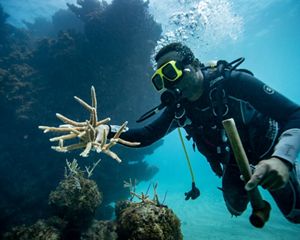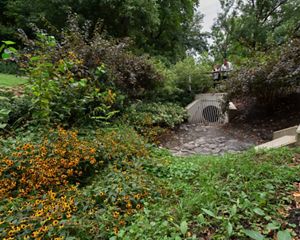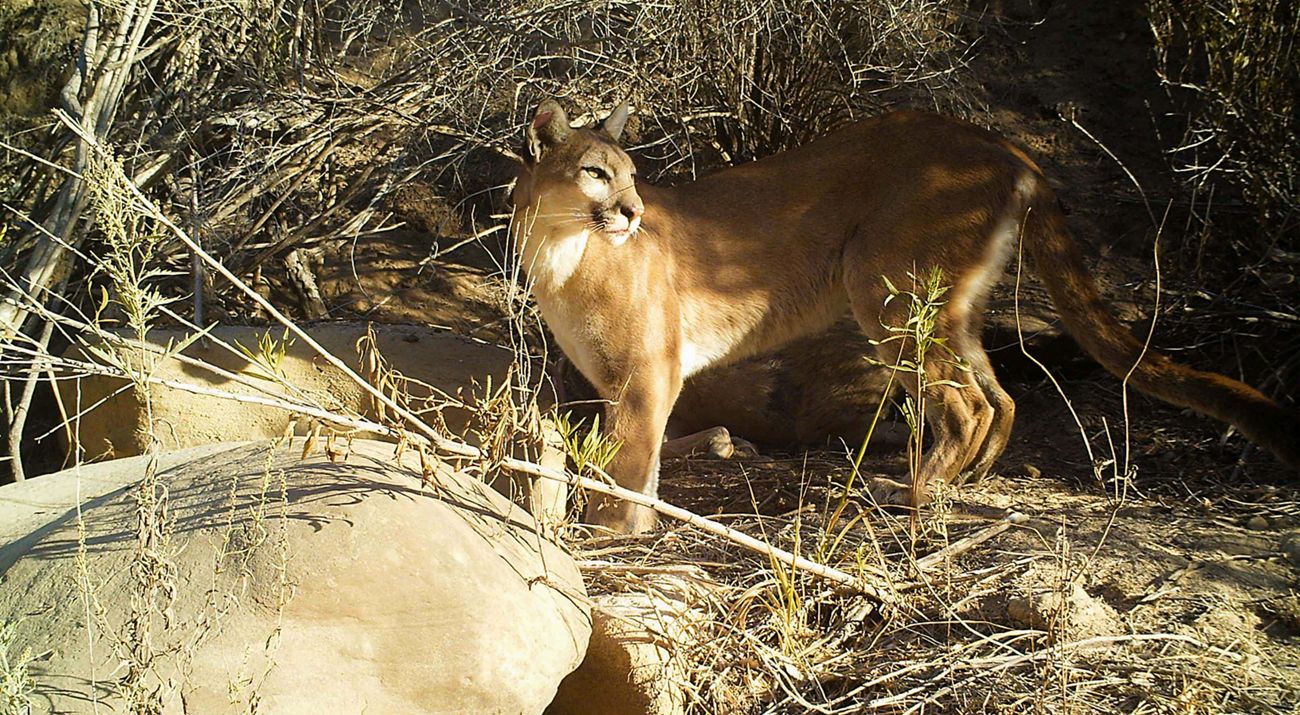
A Path for Mountain Lions
In this episode of the Destination Nature podcast, hear from the scientists working to help save mountain lions in Southern California.
Destination Nature: A Path for Mountain Lions
Click the green arrow below to hear episode two of Destination Nature.
Stacy Raine [SR]: Late one night, a lone mountain lion walks silently toward a concrete bridge and eyes the creek path underneath. He’s known to the researchers that collared and track him as M93. He’s a young lion – just two years old. Until recently he’d been with his mom, learning how to survive. Now, it’s time to establish his territory somewhere else.
In the last six weeks he’s covered the roughly 60 miles from the top of the Santa Ana mountains in Southern California down to the bottom. He’s ventured farther south, into the mountains of Camp Pendleton, the expansive military base just below. Then he kept moving, making his way over to the rapidly developing outskirts of Temecula, one of southern California’s fastest growing cities.
He wants to go under that bridge, to follow Temecula creek, the natural migration path for animals in this area. He wants to get to the other side, where he can more easily find territory and suitable mates.
But there’s one big 8-laned problem holding him back.
This is Destination Nature, a podcast by The Nature Conservancy that takes you into the field to
hear the stories behind conservation projects from all around the globe.
I'm Stacy Raine.
Interstate 15 begins in San Diego, and if you drive about an hour north along this road, you'll find yourself in the city of Temecula. On this stretch of the 15, you’ll probably notice how many rocks dot the green vegetation of the Santa Ana mountains off to the west. Some jut out so far, they look like they might come tumbling down at any moment. Off to the east, past the golf course, you can see the looming peeks of the Palomar Mountain range.
What you probably won’t notice as you drive on this busy highway is that Interstate 15 cuts right through the only natural migration corridor for mountain lions in this area.
This is a big problem for M93. This highway roars with traffic. It’s no place for this lion, and he knows it.
Winston Vickers [WV] We've had mountain lions that had radio collars, so we knew exactly where they walk, uh, come down, there's creek for instance, and come within about 60 yards of the bridge and then turn around.
SR: Dr. Winston Vickers is a research veterinarian with the Wildlife Health Center at UC Davis. He and Trish Smith, an Ecologist for The Nature Conservancy, have been working together for many years to study mountain lions in this area to understand the threats they are facing.
Tracking collars make the job a little easier. There’s really only one way to put a collar on a mountain lion. You have to capture him, help him go to sleep, put your hands uncomfortably close to his face, and secure the collar around his neck as carefully as you can. Common practice for Winston. He places roadkill deer in places that, thanks to trail cams, they know mountain lions frequent, and when a lion enters the trap:
WV: We would go immediately to that location and sedate them, uh, with anesthetics and put collars on them, sample their blood, sample, their tissue, their hair, their whiskers, all kinds of samples to learn as much as we could from each handling event with the mountain lions.
SR: It’s exhilarating and rewarding work, but it can also be a little unpredictable.
WV: I have had one just to suddenly stand up with us right beside it on our knees. And then he was eye level with us. But, uh, of course what he wanted to do was leave. And so, we just, I just sort of grabbed his, he had his radio collar on, so I just kind of grabbed him and directed him away from us and he left cause that's what he wanted to do. Um, you know, when they wake up, suddenly they're very confused and you know, they're groggy. So, it's not like there's a great deal of danger there, but, but it can be disconcerting.
SR: Disconcerting at times, but worth it because they’ve learned quite a bit from tracking these lions.
WV: They're migrating animals that are looking for homes and they're very compelled to explore and keep going. Their ranges are large. An average home range of a male is around 150 square miles in this area and females about half of that. And if you think about 150 square miles in an area like this, you cannot cover that much ground without crossing a highway or two or three. So just to maintain a territory, they have to be crossing highways and that's why a highway like I 15 tends to divide territories
SR: M93 has reached this juncture that leads under the interstate for a reason. It’s the path that will take him from the Santa Ana mountains to the Palomar Mountain Range. He needs to pass through – he’s driven by instinct to migrate, maybe away from other males, maybe due to hunger, and so far, he hasn’t been successful finding a place of his own.
M93 is pinched, as these scientists say, into this part of the mountains due in large part to development, and specifically to the interstate that cuts through the normal migration corridor for mountain lions and other species as well.
What was once one large population of mountain lions spanning across California has now been divided into ten, all becoming genetically different from each other. Six of those subpopulations are in the coastal California area south of San Francisco and all of them are experiencing a loss in genetic diversity to some degree.
WV: This population is the most inbred population anywhere on the globe, actually, of mountain lions except uh, the Florida panthers and they are an endangered subgroup of mountain lions, in the Everglades. And the Florida panthers went into this extinction spiral as they say, or extinction vortex is a term that used. And so, what we're trying to avoid is the same thing happening here and the population beginning to decline dramatically.
And other than them, this is the most endangered population from the standpoint of, of the effects of inbreeding.
SR: In cases like this, where a population is cut off from opportunities to mate with other populations, they experience what’s called “inbreeding depression.”
WV: This is a term that's applied when kittens don't have as good a survival rate. There are sperm abnormalities in the males. The females may have less fertility, so you have a net effect of fewer kittens per female per year. Uh, and so over time, naturally a population declines if there's no new animals coming in to replace that, that lack of reproduction.
This sub-population of lions in the Santa Anas, this one group that used to be part of a whole population that mixed genes across California, is suffering from reproductive losses so great that they can’t sustain their population over time.
SR: At the bridge along Temecula Creek, M93 hears the traffic, he sees the cars, the lights. He weighs his options.
WV: They tend to approach highways like this one and then turn around. In many cases they rarely try to cross even when structures are present, where they could safely cross. If the highway is super busy.
SR: M93 senses that crossing could be deadly, but the decision not to cross is just as deadly for these animals. Not crossing means the entire population here in the Santa Ana mountains could go extinct by 2050.
It’s very rare to see a mountain lion in the wild, but it does happen on occasion. Trish, TNC’s Ecologist on this project, said she’s spent a lot of time in the field and:
Trish Smith [TS]: In my 30 years of being a biologist. I've seen a mountain lion; I think 11 times in the wild.
They're very elusive. I sensed their presence before I actually saw them. Most times they're either behind a rock or up in the brush or I just kind of look to the side and there they were. And then they take off like lightning. They're just gone. As soon as you see them, they leave. You don't even hear them. Um, even when they're running away.
SR: It’s surprising they are so quiet considering their impressive size. As adults, these felines are usually 6 to 8 feet long from their nose to the tip of their tail. Females can weigh around 85 pounds and males are even larger at 150 pounds.
WV: They're front paws are a little bigger and a big male will have a paw, if his claws are extended, the size of a man's hand. So very, very big powerful instruments.
They have powerful, slightly longer rear legs so that they're good at ambushing and jumping. They can jump long distances and, and jump 12 feet in the air, uh, to clear fence
SR: These majestic animals are known by more than 80 different names – so many, in fact, that one of its nicknames is “cat of many names”:
WV: Cougar, Puma, Catamount and panther in the case of Florida, but in South America, central and South America, they have a number of other Spanish-derived names.
SR: They’re also known as ghost cats and mountain screamers, and if you’ve ever heard the blood-curdling vocalization of a female mountain lion, you know why those names are so fitting.
WV: They don't roar. Uh, they don't have that capacity.
They, uh, do something of a scream, uh, at times that people have likened to a, a woman's screaming. That's primarily, uh, females in heat. When their advertising their status, they purr, usually females interacting with the kittens they chirp the females, uh, and the young oftentimes chirping each other like birds and they sound like birds.
They growl.
SR: But as M93 walks towards the Temecula Creek Bridge he probably isn’t making any noise at all. He is looking, listening, smelling, wondering if he should try and cross. He doesn’t.
The thing is, the path along Temecula Creek that leads under that interstate is actually a safe place for him to move through. The bridge is located right next to protected lands in the Santa Margarita Ecological Reserve managed by San Diego State University. The other side is protected by Riverside county. He could make it through and work his way to the Palomar mountains. He just doesn’t know it.
Cara Lacey [CL]: It's a functional wildlife crossing, but it's not functioning to the point where it should be.
SR: That’s Cara Lacey, an urban planner for TNC. She thinks about how we can better plan our use of land in a way that helps protect wildlife, and one place she thinks a lot about is this bridge.
She says there are so many deterrents that mountain lions and other species aren’t using it like they could be.
There is, of course, the problem of seeing moving vehicles. The cars zooming above, the headlights streaking past. There are also overgrown, invasive plants blocking M93s line of sight. He can’t see to the other side, and studies show that without knowing they can safely cross, mountain lions usually won’t even try. And, a lot of times, people are there, partying, camping, drawing graffiti under the bridge.
If that isn't enough to deter this lion, the traffic sounds that are magnified by the bridge structure itself probably do the trick.
CL: That's just constant. It's sharp noises. It's rumbling noises.
WV: So, there are things about the environment that they tend to, to have almost like an invisible barrier.
SR: So, mountain lions end up trying to cross the interstate in places nearby, and it’s not going well for them. There are not very many mountain lions here as it is. Winston estimated that there’s maybe 5 or 6 males and 11 or 12 females in the Santa Ana Mountains. Less than 20 adults, then add in a few kittens and some adolescents as well. If we’re lucky – 30 in all. Not very many, and Certainly not a large enough gene pool to keep this population healthy. They need to make connections with other groups of mountain lions.
So, these big cats are motivated to find somewhere else to roam and find mates. If the bridge doesn’t seem like a safe place, and if they are very bold, they chance Interstate 15. And a very few times, they’ve made it across.
WV: Of the animals that we have identified that did come into the mountain range, which is only three over the time of the study, um, only one survived and reproduced that we detected. Young mountain lions don't live very well anyway. They have to compete with adults. They have to cross strange territory that they don't know. Uh, they have to cross roads that they're not familiar with, so they don't know where the safe points are. So, they have a lot of barriers just getting around the landscape as new individuals, like going into a new neighborhood and they're trying to find their way around where they can run into hazards.
SR: Three made it over to the Palomar mountains, one survived. That was over the course of the study he is referring to, the Southern California Mountain Lion study. It’s been going on for nearly 18 years.
The situation is dire. They could go extinct in as little as 12 years.
But why does this matter? What’s the big deal with these big cats?
WV: All the large predators have major ecological roles of regulating ecosystems. The mountain lions help regulate the coyotes and the smaller carnivores. And if they're not there, they tend to - those animals tend to increase in numbers and that can have an impact, a negative impact on ground nesting birds and, and other wildlife. And then if they're not regulating the deer, the deer can have an over abundant impact on the vegetation. And that can change the ecosystem in a broad way. And that's been documented in multiple ecosystems with multiple large top predators that when the top predators are removed, then those animals below them on the food chain tend to increase in number and it alters the entire ecosystem.
SR: What we see happening to the largest predators in an environment means that the smaller ones are suffering too. It’s not just the mountain lions that are getting pinched into this area and can’t cross the road.
CL: The mountain lion is a really great indicator of the issues that most species are, are experiencing right now with additional roadways, additional, um, highways and freeways as well as additional housing encroaching into their environment.
SR: Of course, there’s also protecting nature for nature’s sake. But even more surprisingly, they play an important role for people:
WV: It’s even been shown that with mountain lions and deer, if deer numbers increase, then, uh, collisions with cars increase.
SR: And they keep a check on some of the species we also don’t want too close, especially in our homes, like rats, for one.
TS: With these Mezze predators like raccoons, skunks, possums, they aren't particularly popular in our neighborhoods. And when their populations get out of whack because there's no longer larger predators like coyotes, you'll really see even more cascading effects in terms of an outburst of rats, which then become a problem in people's yards and in people's homes. So, by keeping the balance of predators, whether it's mountain lions, coyotes, and the smaller predators, we can really keep a healthy ecological system, not only for nature but for people as well.
SR: Inbreeding due to severed migration corridors isn’t the only threat to these lions. Mountain lion territory is shrinking under pressures from development, bringing us closer and closer to the places they frequent, and forcing them to come closer and closer to us in search of food or territory.
CL: We're seeing both the barriers of highways, but also the increased urbanization that's impacting their, their movement and, and how they're, they're able to live and survive.
SR: And particularly, there’s a problem with the way we’ve developed. We’ve fragmented the landscape. We’ve put a subdivision over here, a shopping center over there. As Winston put it, we’ve essentially just created “more edges,” making it much harder for mountain lions to avoid their biggest predator – Us.
When a mountain lion snatches a pet, which happens occasionally, or kills someone’s livestock – which happens more frequently, the owner can seek a permit to kill the lion. People want to protect their animals, the mountain lions want to get their next meal, and the resulting conflict is bad for the people and their animals and can be deadly for the lions.
WV: The more narrow you put the spaces between the, the areas of urbanization, the more likely they are to move into urban area as they're trying to find their way through.
SR: M93’s story is not a happy ending. The night he turned away from the bridge was in 2012, and he never did cross to the other side, though he went back to the interstate several times. Two years later, he was poisoned.
His family’s story isn’t much better. His mom, F89, was killed by a male lion, perhaps while protecting her offspring. His brother, M91, was killed on a toll road during their journey together early on. His half-brother, M118, the one F89 might have died trying to protect, was legally killed for threatening livestock.
Before M93 died, though, he’d established a territory and fathered at least two kittens. One of his descendants, M122, was later killed after also taking someone’s livestock. We don’t know what became of the other one.
TNC is working hard to save these lions, bringing together partners to find ways to help them migrate safely both in the short-term and in the long-term.
Ideally, we’d create a “system of crossings” as these scientists put it, giving species several safe routes to pass over or under the interstate. Different species want to migrate in different ways. Trish puts it pretty simply:
TS: You won't catch a butterfly going through a culvert or an underpass of a freeway. An overpass would probably work better also for our lizards as well.
To determine exactly the best way to create safe passages for wildlife in the Santa Ana Mountains, TNC and our partners consulted with wildlife crossing experts. We also brought in the state's highway agency, Caltrans, that owns and manages the highways and would undertake the building of any structure. Then UC Davis, funded through a grant from the State of California, brought in civil engineering students from California Polytechnic University Pomona to illustrate what these crossings could look like.
CL: Cal Poly looked at three different conceptual designs and feasibility studies and the three designs were one to upgrade the Temecula Creek Bridge. The other was to look at a culvert that could be, um, kind of bored underneath the freeway under I 15 to reconnect the habitat there. And they also designed an overpass and it would span over the entire freeway, um, with a central support.
SR: Cara and Trish are particularly excited about this overpass, which could be as wide as a football field. There’s one big difference between regular bridges made for people and this design made for wildlife:
TS: It would be vegetated. So, you would have soil actually on top of the bridge. It wouldn't be a roadway bridge that used is used by cars. It would be solely for wildlife use and so we would place a layer of soil on top, they say like three meters of soil on top of which you would plant native chaparral habitat or coastal sage scrub habitat, the habitat that's found on either side of the roadway so that wildlife that are approaching the bridge, just see it as another patch of habitat they're moving through.
SR: It would stretch right over those 8-lanes of interstate, starting on SDSU’s Santa Margarita Ecological Reserve – but there also needs to be a protected space on the other side that’s safe for mountain lions.
This is where a recent TNC land purchase comes into play. You can build 5, 10, 15 crossings, but if the land around the crossing isn’t protected, they will be obsolete as soon as development takes up the open space. TNC was keenly aware of this and found the perfect spot to purchase and set the stage for future wildlife crossings - right across the interstate from the Ecological Reserve
TS: Rainbow Canyon property is just 73 acres, but it's pretty representative of the Santa Anna Mountains in this particular region.
SR: By that she means that it stays green and has dense, shorter vegetation. It’s very rocky, has a few rare plant species including Rainbow Manzanita, and wildlife like birds, foxes, bobcats, and of course, mountain lions.
But getting the permits in place and constructing these two new passageways – the culvert and the overpass – will take decades, and that’s after the funding is in place to do it. But time is something these mountain lions don’t have.
TS: Temecula creek is the only natural corridor that we have now that's linking the Santa Anna mountains eastward to the eastern peninsula ranges. And so, because it's the only viable crossing we have, we need to figure out how to fix it. And that's where ideas of enhancing the habitat, dealing with the roadway noise by putting in sound buffers underside, the a bridge overpass might be measures that will enhance its function for not just mountain lion spot, all sorts of wildlife species.
SR: The current deterrents there – vegetation overgrowth, lighting, noise, even people - these things are relatively easy fixes, ones that might take only two or three years.
We need to fix that bridge, and make sure the animals still aren’t trying to cross elsewhere.
WV: We would like to prevent them from even trying it with fencing. The hope is that they will move alongside the fence to the good crossing and cross there. Just having a crossing doesn't do it.
SR: Longer term, the culvert and the overpass structures can be built to give mountain lions and other species safe places to cross that work for them. Some species want to stay in open air, some are happy to go underneath. There’s a real need for both, in addition to the upgraded bridge path.
CL: Of course, in an ideal world, we could have all three. Um, and we'd fund all three and we'd have the ability to build all three,
SR: These crossings, once completed, and the land protection around them, will reconnect habitat and species here. The hope is that this serves as a model, encouraging new crossings and habitat protection elsewhere in the state and even further afield. That eventually all these populations will no longer be cut off from each other – they’ll have clear migration routes that keep them healthy and encourage them to move in places not so close to human habitat.
If this work can be done – if crossings are built and the right land is protected, the future is bright for wildlife here. They can finally – easily, safely – cross that interstate.
CL: There's no more deaths, there's no more impacts to animals. They have the ability to finally cross and to find each other. Um, in terms of the mountain lion. And so, you'll start to see more genetic diversity, which is really what we need to have for the mountain lion. But that's also an indication of what can happen for other species.
So ideally, we would want to see generation after generation start teaching their young how to use these crossings instead of trying to cross the freeway. Of course, we'll have wildlife fencing, but they'll know how to follow that and get to the crossings that they need to use. Once you get, a species starting to cross they have the ability to teach their young how to use it. And seeing that happen is really, really impressive.
SR: It’s possible that, one day, maybe a descendant of M93’s kitten, the one that we hope is still somewhere out in the Santa Ana mountains, will be led across this overpass by his mother, led through this new landscape over the roaring interstate, this place just for them that will lead them safely to the other side.
Thanks to Winston Vickers, Trish Smith, and Cara Lacey for being on this show.
Destination Nature was produced by Katie Bacon, Amy Hepler Welch, and me, Stacy Raine with help from Kristin Mullen. Special thanks to AudioRaiders for the production sound, Bradley Morgan Dale for the music, UC Davis for some of the sounds, and the Dallas Audio Post for their editing work on this show. But most importantly, we are so grateful to our supporters who made this work, and this story about the work, possible.
Next time on Destination Nature, take a trip to Philadelphia to see how nature is helping this historic city fight water pollution.
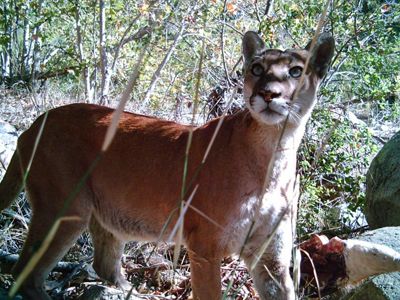
How far would you venture for a place to call home?
Follow along on a journey from the top of the Santa Ana Mountains to the sprawling urbanized valley below. In this second episode of Destination Nature hear from a research veterinarian, ecologist and urban planner on creating a path for the future of California’s mountain lions.
Learn More About:
- The threats to mountain lions in Southern California
- The importance of mountain lions to the ecosystem
- What TNC is doing to protect this species
Capture and Release: A Visual Story
Understanding the lives of mountain lions is key to protecting this species. UC Davis Wildlife Health Center and TNC collar and track individual lions to gain insight into how they move across the landscape.
Researchers use camera traps to determine places mountain lions frequent then place roadkill deer in the back of a large trap. When the mountain lion walks into the trap to grab a snack the gate closes behind him.
The research team monitors the traps and immediately responds once a mountain lion has been captured. They sedate the mountain lion, take samples of blood, tissue, hair and whiskers then place a tracking collar before letting them go.
Quote: Trish Smith
By keeping the balance of predators, whether it’s mountain lions, coyotes, or smaller predators, we can keep a healthy ecological system.
Photo Gallery: A Path for Mountain Lions
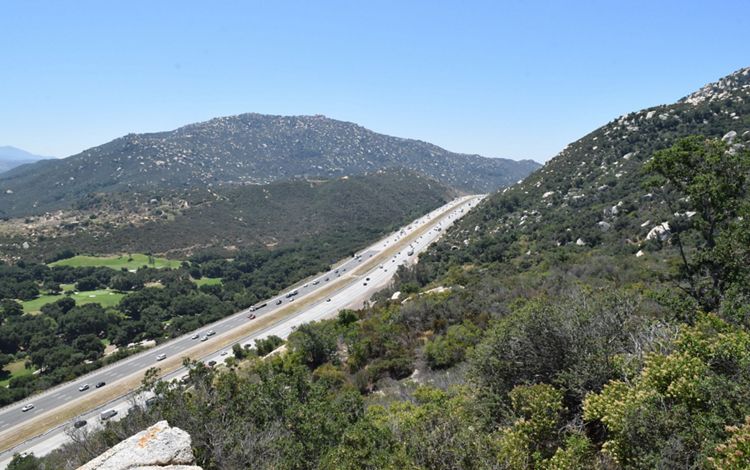
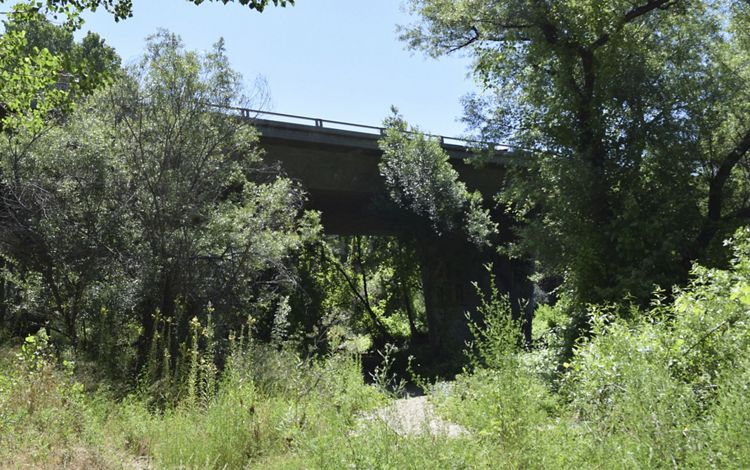
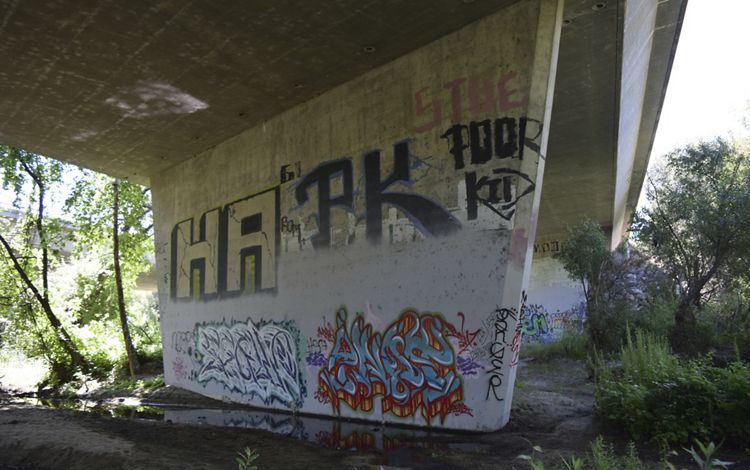
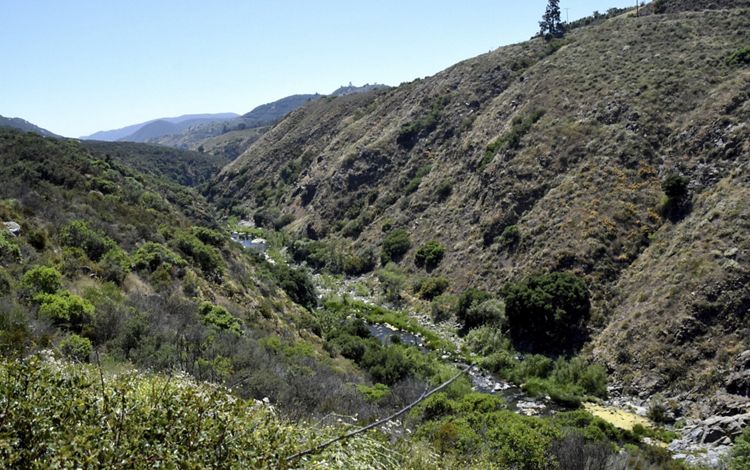
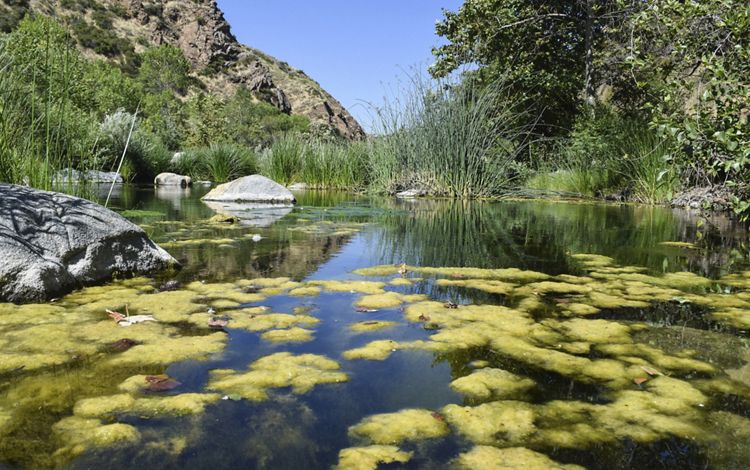
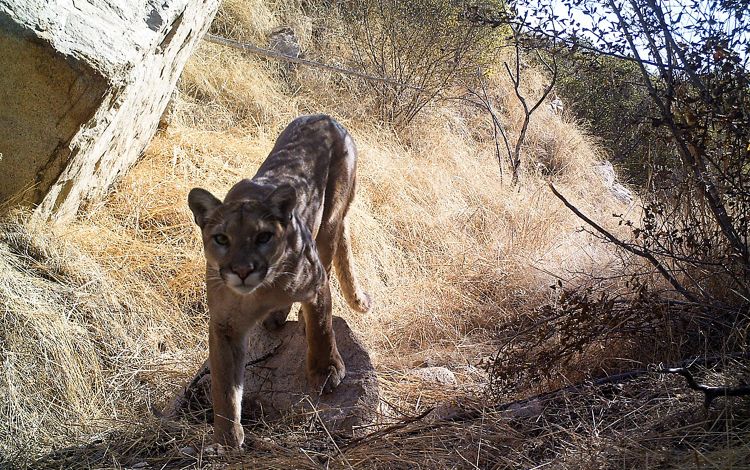
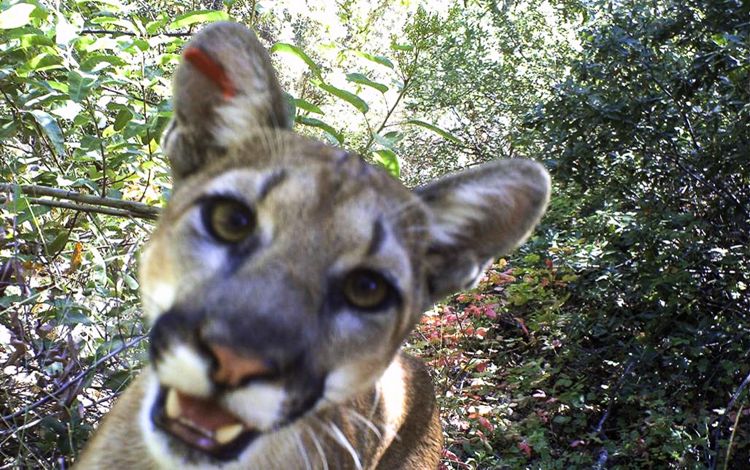
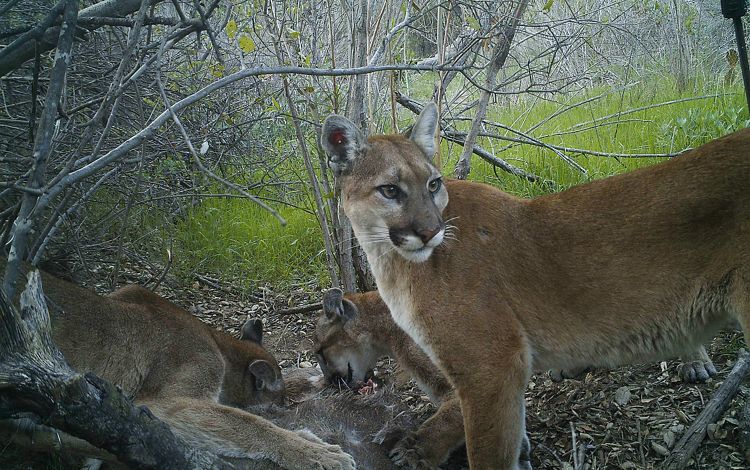
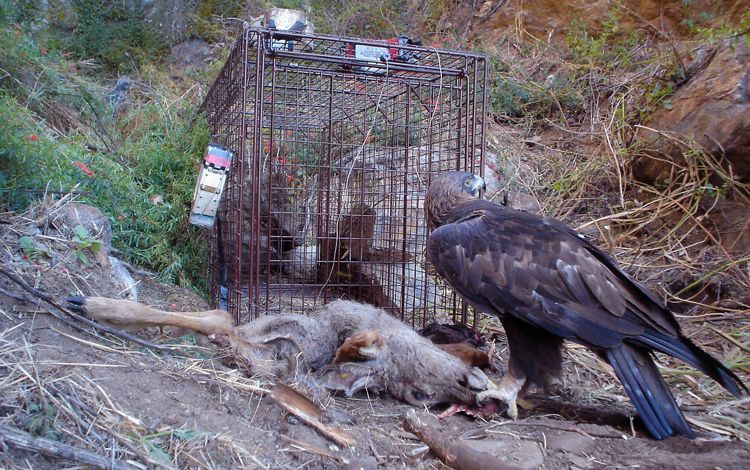
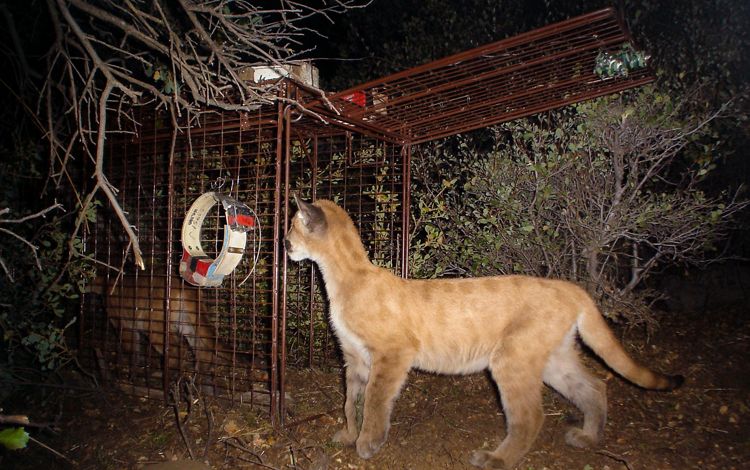
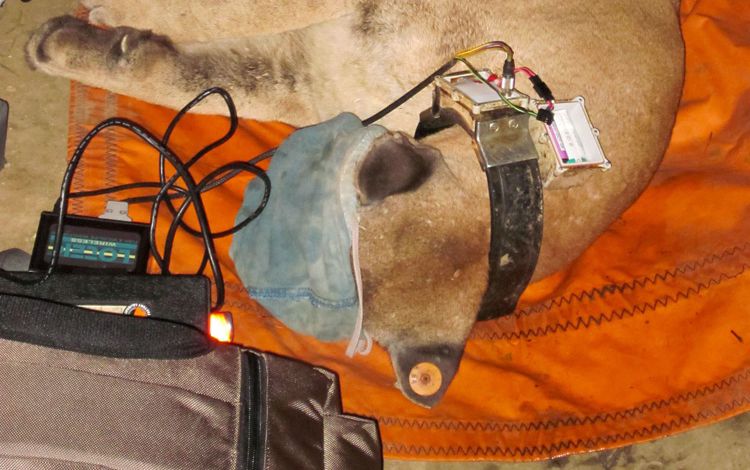
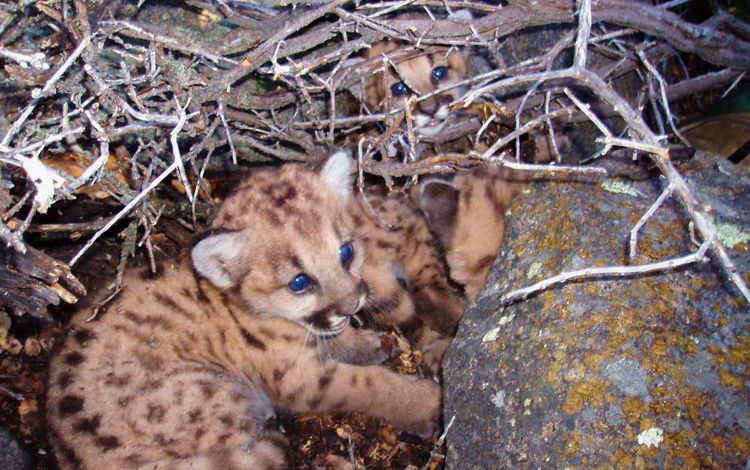
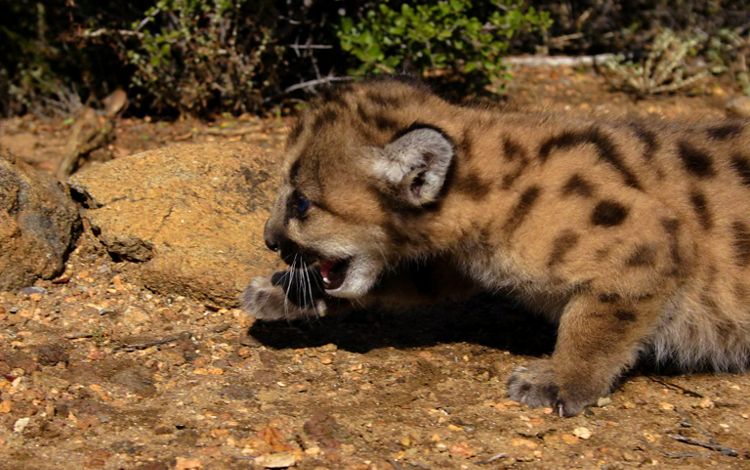
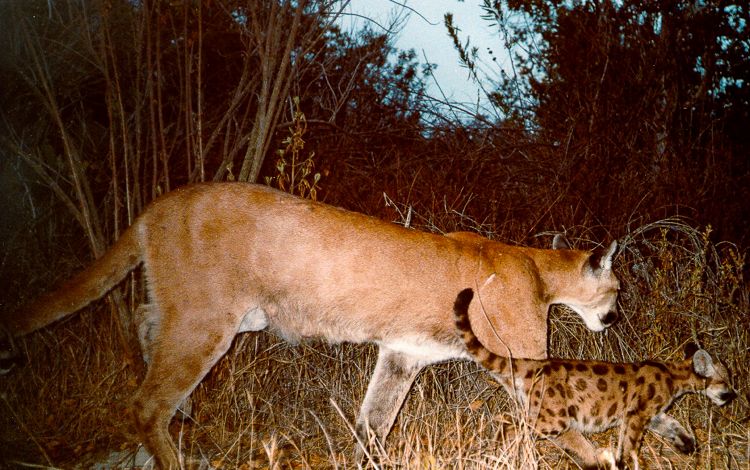
Credits
Special thanks to Dallas Audio Post for editing and sound design, Audio Raiders for sound production, UC Davis for use of sound recording and photos and Denis Callet for the breeding call sound recording.
About Destination Nature
Destination Nature is a podcast series from The Nature Conservancy that brings conservation stories to your computer, exploring a new project, talking with TNC staff and partners about our work in action.
Email our team to share your thoughts about the Destination Nature podcast or to suggest topics for future episodes at destination.nature@tnc.org.





